Mr Recorder Douglas Campbell
QC:
Introduction
1.
The First Claimant is the owner and the Second Claimant is the exclusive
licensee of a number of EU and UK registered trade marks, including EU trade
mark no. 005482484 (“the EU mark”) and UK registered trade mark no. 1259226
(“the UK mark”). These trade marks are each registered for a mark with the
following appearance:
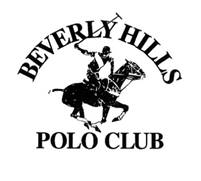
2.
The EU mark is registered inter alia for “Clothing, footwear, and
headwear” in class 25, pursuant to an application filed on 17 September
2004. The UK mark is registered for “Articles of clothing; but not
including footwear” in class 25, pursuant to an application filed on 30
January 1986. The UK mark has a disclaimer as follows: “Registration of this mark shall give no right to the exclusive use of
the words ‘Polo Club’ and ‘Beverly Hills’”.
3.
Nothing turns on the difference between the Claimants and I will simply
refer to “the Claimants” generally save where otherwise appears.
4.
The Claimants opened the case, without objection by the Defendants, on
the basis that the Defendants fell into 4 categories, as follows:
i)
D1, D2, D3, and D11 (“the corporate Juice defendants”). Of these, D1 is
a retailer; D2 holds the Defendants’ domain name; D3 holds some of the
Defendants’ trade marks and land; and D11 is the wholesaler of the alleged
infringing goods. D11 is much the most important in this group.
ii)
D4, D5, and D12 (“the Juice directors”). D4 is the former director of
D1 and D2; D5 is the current director of D3 and D11; D12 is another director of
D11. D5 (“Mr Ahmed”) is much the most important in this group.
iii)
D7, and D13 to D16 inclusive (“the third party retailers”). They were
jointly represented along with both sets of Juice Defendants. Nothing turned
on their involvement and they played very little role in the trial.
iv)
D6, D8, D9, D10, D17, and D18. These Defendants had all settled with
the Claimants and played no part in the trial.
After this judgment was
circulated in draft the Defendants sought to expand this to 6 categories of
Defendants. In particular they sought to divide paragraph (i) into D1 and D2
(“the SMPC Defendants”), and D3 and D11 (“the Juice Defendants"); and to
divide paragraph (ii) into D4 (“SMPC Director”) and D5 and D12 (“Juice
Directors”). However it became apparent that the only purpose of this exercise
was simply to ensure that the liability of D1, D2, and D3 as joint
tortfeasors is decided at the separate hearing mentioned in paragraph [11]
below. Since that is what is going to happen anyway, there is no need to make
this expansion.
5.
I will refer to “the Defendants” generally, meaning those Defendants in
the first 3 categories, save where otherwise appears. This is done for
convenience and is not to be taken to be a decision on the involvement of any
individual Defendant except where the contrary is made clear.
6.
There are six issues in this action, namely:
i)
Infringement of the EU and UK marks pursuant to s 10(2) of the Trade
Marks Act 1994 (“the Act”)/Art 5(1)(b) of the Trade Mark Directive, 2008/95/EC (“the
Directive”); and Article 9(2)(b) of Regulation 207/2009, as amended by
Regulation 2015/2424, which since 1 October 2017 has been codified by
Regulation 2017/1001 (“the Regulation”) respectively.
ii)
Infringement of the EU and UK marks pursuant to s 10(3) of the Act/Art 5(2)
of the Directive/Art 9(2)(c) of the Regulation.
iii)
Passing off.
iv)
Breach of contract by D3 or D11.
v)
Procuring of that breach of contract by D5.
vi)
D11’s counterclaim for unjustified threats of trade mark infringement.
7.
The Claimants allege that the marks have been infringed by the
Defendants’ dealings in goods bearing a number of logos, each of which signs contains
the name “SANTA MONICA POLO CLUB” and a representation of at least one polo
player, with a raised stick, on a pony, which is shown side on and running.
The Re-Amended Particulars of Claim showed 6 examples of this.
8.
The Claimants do not complain about the use of the name “SANTA MONICA
POLO CLUB” alone. However when I asked the Claimants about this, they made it
clear that they made no concession about whether the use of that name alone
would infringe. They simply meant what they said, ie that their complaint was
about various logos. Moreover they still relied on the use of that name insofar
as it formed part of the logos complained of.
9.
The Defendants pointed out that they had used a number of other signs
which fell within the scope of the description set out in paragraph [7]. They
produced a Schedule thereof, which I reproduce at Annex 1. I infer that this
was done by the Defendants in order to demonstrate the full width of what the
Defendants perceived the Claimants’ case to be. The Defendants asked the
Claimants to say whether these signs all infringed the marks in issue, and upon
the Claimants saying that in their view all of the Defendants’ signs infringed
such marks the Defendants then asked me to determine infringement with respect
to every sign in their Schedule. The Claimants did not disagree with this
approach. I will refer to the Defendants’ logos collectively as “the SMPC
brand”, save where it is necessary to be more specific.
10.
Since all of these marks are now in issue, albeit somewhat artificially,
I will do so. However I made it clear to the Defendants that the amount of
individualised attention given to each of the signs in the Schedule would be in
proportion to the amount of individualised argument which was advanced in
relation to each sign. In the event, most of the argument was focussed on the
first 3 signs in the Schedule and only a few of the others were mentioned. Indeed,
as the Claimants pointed out, a number of the signs in the Defendants’ schedule
did not even appear to have been used by the Defendants. They merely appeared
in the Defendants’ internal records as proposals.
11.
By Order of Arnold J dated 3 April 2017, this is a split trial whereby
this trial will determine all issues of liability save in respect of
allegations of joint and several liability of the Defendants. This includes
the position of D1, D2, and D3 as joint tortfeasors, it being admitted that D1
is liable for the goods which it sold as a retailer. A second trial will deal
with any remaining allegations of joint and several liability and with
quantum.
The witnesses
The Claimants’ witnesses
12.
On behalf of the Claimants I heard oral evidence from Mr Eli Haddad, CEO
of the Claimants; Mr Earl Jacobs, who has (via a number of companies) been one
of the main licensees under the Claimants’ marks since 1993; and Mr Marc Ball, who
has been a consultant and sales agent for the Claimants in the UK since 2015.
13.
Mr Haddad gave evidence about the history and development of the Beverly
Hills Polo Club brand (“the BHPC brand”). He explained that it is exploited worldwide
by 4 groups. The Claimants are the smallest of these 4 groups. The others are
BHPC Associates LLC, owned by Mr Haddad’s brother, which has rights in the
United States; Young Sangyo Co Ltd, which has rights in Japan; and another
company called Wah Sing which has rights in China. Mr Haddad drew attention to
an entry in License Global magazine for 2017 which estimated that the brand had
$1.7 billion of retail sales worldwide. He also exhibited a confidential schedule
of retail sales made under the brand in Europe, which had been prepared by his
son Daniel.
14.
The Defendants criticised Mr Haddad for putting forward the $1.7 billion
global figure, and they did so for two reasons. First, they said it was pure
hype. Secondly, they said his evidence was inconsistent as to whether the
correct figure was $1.7 billion or “over $100m (USD)” per annum. I do not
think that either of these criticisms is a reason to reject Mr Haddad’s
evidence. The global figure was only ever put forward as an estimate, and Mr
Haddad gave an explanation of how the estimate was arrived at. The precise
amount does not matter anyway. The second criticism is simply wrong: see
paragraph [13] of Mr Haddad’s first witness statement. The Defendants also
criticised his schedule, but only one very minor error was identified (namely
the precise amount of socks sold under the BHPC brand in Belgium in the fourth
quarter of 2010) and this makes no difference overall. I found Mr Haddad to be
a good witness.
15.
Mr Jacobs was an engaging witness who gave detailed evidence about how
the Claimant’s marks had been exploited in the UK and EU. For instance he had
done so since 2006 via Beverly Hills International Limited, of which he has
been sole owner since 2011. He explained that most marketing activity in
relation to the brand was carried out by his company’s customers, such as
Matalan, Jacamo and Morrisons, although some marketing (eg by advertisements
placed into in-flight magazines) was done by his company. He gave evidence
about sales of BHPC branded products to TK Maxx, which he believed had been
damaged by sales of SMPC branded products to the same retailer. The Defendants
accepted he was a good witness, and I agree.
16.
Mr Ball has worked in the clothing industry for 20 years. He became a
consultant, and sales agent, for the BHPC brand in the UK in 2015. He gave
evidence about various dealings he had with Mr Jamie Bakehouse, the Buying Director
at a multi-brand retailer called Blue Inc (UK) Limited (“Blue”). Blue has over
100 stores and sells over 20 brands. Mr Ball’s evidence was that Mr Bakehouse
was confused into believing that the SMPC brand was the BHPC brand. I will
deal with this issue below in more detail, about which he was robustly
cross-examined. Having seen that cross-examination I am satisfied that Mr Ball
was doing his best to assist the Court.
The Defendants’ witnesses
17.
On behalf of the Defendants I heard oral evidence from Mr Ahmed; and
from Mr Lewis Timmins, a Senior Designer employed by D11. Mr Ben Pearson,
Managing Director of D14 and Mr David Preece, Company Secretary of D7, gave
written witness statements which were not challenged and they were not required
to attend for cross-examination.
Mr Keith Shadbolt, a Director of the 15th Defendant, gave a witness
statement but was suffering from an illness and was unable to attend. His
evidence was admitted under a Civil Evidence Act notice which was not opposed.
The Claimants did not accept what Mr Shadbolt had said about certain invoices,
but this was a minor point.
18.
Mr Ahmed’s evidence covered the creation of the SMPC brand in 2006. He
said he did not have a detailed recollection of what exactly took place then,
although he did give some evidence about its creation and also exhibited some
emails from that time. He also gave evidence about the development of the SMPC
brand to date, including details about sales (such as sales of SMPC branded
products to TK Maxx) and marketing activities (both in the UK and Europe). He
stressed what he believed to be a lack of confusion between the two brands in
the market. He also dealt with his role in the breach of contract claim (issue
(iv)).
19.
Mr Ahmed was cross-examined on some of this evidence, but not on all of
it. He was not challenged as regards the reasons for adopting any of the signs
complained of, and it was not put to him that the Defendants had any improper
motive for doing so.
20.
He was challenged on his evidence as to when the Defendants actually
started using the SMPC brand. In his second witness statement, served on 31
March 2017 in support of an application by the Defendants for interim
injunction to restrain threats, he said that “It is a matter of fact that
the Santa Monica Polo Club brand has been on the market for 10 years”, and
there were similar statements in his first witness statement. By the end of
his cross-examination he accepted that (a) the SMPC mark was registered in 2006
(b) the brand was first shown to traders in June 2008 and (c) the brand was not
made available to consumers until early 2009. Indeed the first specific date
which I was shown was for wholesale sales, and that was 9th February
2009. The Defendants pointed out that his first two witness statements were
made in the context of an interim application. If this is intended to mean
that it was less important to be accurate in these statements then I disagree.
In my view the statements Mr Ahmed made there were misleading, and he should
have said what he eventually did say.
21.
When Mr Ahmed was asked about his role in the contract claim, it became
apparent that he had been evasive to the Claimants’ solicitors about the precise
Defendant on behalf of whom he had been acting at the time of the alleged
contract. He continued to be evasive on this topic in his evidence before me,
although he eventually admitted he had been acting on behalf of D11.
22.
At the end of his cross-examination, Mr Ahmed was shown two decisions of
this Court in which his evidence had been severely criticised. The first was Tradition
(UK) Limited v Ahmed and others [2008] EWHC 2946 (Andrew Simmons QC), in
which Mr Ahmed was the 3rd Defendant. The more recent one was Ingram
v Ahmed and others [2016] EWHC 1536 (Ch), Proudman J, in which Mr Ahmed was
the 2nd Defendant, and which Mr Ahmed said he was appealing. It is
true that in both of these cases Mr Ahmed’s credibility was seriously
criticised but I did not find either of these cases to be helpful or relevant.
They involved different facts.
23.
In closing, the Claimants submitted that Mr Ahmed was not just opportunistic,
in the sense of saying whatever suited his case, but had also pressured Mr
Bakehouse into making false statements to the Defendants’ solicitors. I reject
that. I found Mr Ahmed to be an unhelpful witness, who would never volunteer
information or correct any misunderstandings if he thought that doing so would
adversely affect his interests, but not a dishonest one.
24.
Mr Timmins worked for D11 between 1 November 2010 and 18 November 2011,
then left, then rejoined in May 2013. Although he is a designer, the only
relevant design which he created was the 3-horse sign, which he did after this
litigation commenced in June 2016. He was not asked about that. The rest of
his evidence consisted of his investigations into when other people created the
other designs in issue. This was more of a commentary on historical
documentary materials than evidence as such, but I am grateful to Mr Timmins
for his assistance.
25.
Mr Pearson has worked in his current role as director of D14 since
August 2015, and explained that D14 began buying SMPC branded goods in around
December 2015. He had not previously heard of BHPC, and only became so aware
on 28 February 2017.
26.
Mr Preece explained that D7 began buying SMPC goods from D11 in July
2015. He first became aware of the BHPC brand on 10 August 2016.
27.
Mr Shadbolt said that D15 began buying SMPC branded goods from D11 in
March 2014. He had never heard of BHPC until 28 February 2017.
28.
Each of these last three witnesses made the points (a) that their
company had never sold BHPC branded goods, and (b) was never contacted by any
customers expressing confusion between the two. The combination of these
points means that their evidence does not go very far. If there was no side by
side trading, as per (a), then it is not surprising that there never were any complaints
of confusion, as per (b).
Mr Bakehouse
29.
Neither side called Mr Bakehouse as a witness. It is true that the
Defendants’ solicitors at one point indicated an intention to call Mr Bakehouse
as their witness, but they never did. Instead, Mr Ahmed exhibited a note of
his solicitor’s conversation with Mr Bakehouse during a telephone call on 28th
September 2017. It was not disputed that the note was an accurate account of
the telephone conversation in question.
30.
The Claimants submitted that an inference should be drawn from the
Defendants’ failure to call Mr Bakehouse, citing the well-known case of Wisniewski
v Central Manchester Health Authority [1998] PIQR 324: see in particular
the principles set out at p 340 thereof. The Defendants retorted that the
Claimants could have called Mr Bakehouse as well. Neither side gave me a
reason for his absence.
31.
I agree that both sides could have called Mr Bakehouse, and for this
reason I do not propose to draw any inferences one way or the other for his
unexplained absence from the trial. It is not as if Mr Bakehouse himself, or
his company, was a party. I will simply evaluate the evidence which I do have:
namely that of Mr Ball, who was cross-examined at some length, and the
documentary materials upon which Mr Ball relied.
The facts
The Claimants’ use of the BHPC brand
32.
Mr Haddad gave detailed evidence about sales in the UK and EU, promotion
of the brand in the UK and EU, use of websites and social media, videos, look
books, retail stores (eg BHPC branded goods were sold in 335 stores across
Italy), magazine advertisements, trade shows, celebrity endorsement, and
sponsorship. He also gave some evidence about marketing outside the EU, eg in
the Middle East, India and Egypt which he believed would have come to the
attention of UK and EU residents during travel to these countries. Much of
this was not disputed.
33.
Most of his cross-examination focussed on a document entitled “Master
Royalty Report”, and its accompanying summary. These set out retail sales of
BHPC branded goods within the UK and EU, from 2006 to 2016, broken down by
reference to the territory and to the goods in question. It was treated as
confidential during the trial, although much of the material (particularly from
the earlier years) is now out of date. Mr Haddad stressed that it had been
“meticulously prepared” by his son, and wherever there was scope for debate the
Claimants had taken a conservative view. For instance he said that it excluded
some substantial sales made to a company called USC, because the Claimants are
currently in litigation against USC and this meant that “we cannot report their
sales honestly because we do not know what their sales were”. It also left out
sales prior to 2006, although it was clear on the evidence that there had been
such sales – indeed, sales actually started as long ago as 1993.
34.
This document used royalties paid by licensees to calculate the
licensees’ gross sales (this being the basis on which royalties were charged)
then applied a multiplier of 2.5 to the licensee’s gross sales in order to
estimate the value of retail sales. The multiplier of 2.5 was not disputed and
if anything is an underestimate, given that Mr Ahmed used a multiplier of 3 in
his own evidence. I will use the calculated retail prices, which are all expressed
in US dollars. (Most of the licensees reported and paid royalties in euros,
but these were converted into US dollars at the end of each calendar year). There
were a number of instances in 2006-2008 where it was not possible to identify a
country or a product, so these were put in a separate category. Mr Jacobs (who
was the only licensee in this period) confirmed that the entries for these
years all related to sales made in the EU.
35.
I find that the figures in this schedule are accurate and reliable. I
do not propose to set out all of these figures in this judgment. I will simply
set out a few figures by way of background and then return to the detail where
necessary.
36.
In 2006, about $390k worth of BHPC branded goods were sold in the UK, of
which $350k was attributable to luggage. The rest consisted of cosmetics, gifts,
and leather goods but did not include any clothing. No sales were specifically
attributable to any other European country.
37.
In 2007, nearly $6.5m worth of BHPC branded goods were sold in the UK.
About $3.7m was still due to luggage, but $410k was due to underwear. There
were also some sales of underwear in other EU countries: $85k in France, $170k
in Germany, and $57k in the Czech Republic.
38.
In 2008, about $4.8m worth of BHPC branded goods were sold in the UK,
$1.4m of which was due to underwear with luggage remaining commercially
important at $2.4m. Sales of underwear in other EU countries included $443k of
sales in Germany, $19k of sales in Ireland, and $3k of sales in France.
39.
The Defendants conceded that by the first quarter of 2008 there was
sufficient goodwill for a passing off case in the UK: see T3/6623-673.
40.
Taking the entire period for which figures are available (ie from 2006
to 2016), about $12.3m worth of BHPC branded underwear were sold in the UK, and
also $2.2m worth of BHPC branded menswear. There was annual variation but the
lowest total sales figure for any single year in the UK appears to be about $750k.
Over the same period, over $20m worth of BHPC branded luggage was sold in the
UK. These figures are all based on the 2.5 multiplier, rather than Mr Ahmed’s
figure of 3: using the figure of 3 would increase them all by 20%.
41.
The figures for other EU states show considerable variation from year to
year over the period, but what stands out is the very high level of BHPC
branded goods sales achieved in Italy since 2010. In that year alone nearly
$3m worth of branded clothing was sold (split across kidswear, menswear, and
womenswear), and over $45m worth of branded clothing was sold from 2010 to 2016
inclusive. Other sales in Italy over this period are identified as footwear
($24m), “back to school” ($1.5m), and beachwear ($900k).
42.
Other notable entries on the table are Belgium, where $3.7m worth of BHPC
branded socks were sold over the period (mostly in 2010-2011), along with $1.7m
worth of luggage; and Germany, where nearly $1.6m worth of BHPC branded underwear
and $1.5m worth of luggage was sold over the period 2007-2016. In addition to
the countries I have already mentioned there were also sales of branded underwear
in each of Denmark ($28k, along with $2.3m worth of luggage), Czech Republic
($56k, along with $76k of luggage), Poland ($46k), and Romania ($64k).
43.
There were also substantial sales of luggage to other EU states over the
relevant period, although there was a lot of year to year variation. For
instance $1.5m worth of luggage was sold in France and $2.7m in Slovakia. There
were sales of other items as well, eg jewellery, watches, and accessories.
44.
Mr Haddad said that licensees were required to spend 2% of their net
sales on marketing, but that some licensees would spend more. This specific evidence
was disputed in cross-examination, but the Defendants did not suggest to Mr
Haddad that the figures spent on marketing the BHPC brand were insubstantial.
The place of
BHPC’s brand in the market
45.
There was some evidence about where the BHPC brand was placed in the clothing
market in terms of quality.
46.
Mr Haddad rejected the Defendants’ suggestion that it was a low-cost
brand selling to discount shops and other low-cost retailers. He said BHPC was
positioned for the upper/middle end of the market, and said that Debenhams
would be the ideal customer. He also said that BHPC did not compete against upper-scale
brands like Ralph Lauren. His example of Ralph Lauren is important because, as
both sides agreed, Ralph Lauren’s POLO brand was well known for clothing. It
was put to Mr Haddad in cross-examination that some BHPC branded goods were
sold by Sports Direct, but he made it clear that any such sales were not
permitted by BHPC; and I was not shown any evidence about how many such sales
had been made. I accept Mr Haddad’s evidence about this.
47.
Mr Ball put it more colloquially when trying to interest third parties
in taking on the BHPC brand. In this context he said that BHPC was “Ralph at a
price”. Mr Haddad disagreed with the tone of that comment, but I do not think
it is a difference of substance. It was merely Mr Ball’s way of making a
similar point.
48.
Mr Jacobs did not accept that Matalan was a “down and dirty” retailer. He
said they were “middle and upper middle”, with a lot of good brands such as
Pringle. Similarly some product was sold to Littlewoods, which he described as
middle/upper market. Some product had ended up with Jacamo, a value retailer,
but the Claimants had stopped supplying the company which sold them on to
Jacamo. Some sales had been made to Morrison, which was a supermarket rather
than a specialist retailer, but not recently and this was because Mr Haddad had
put a stop to it. In short, BHPC goods were normally sold and were intended to
be sold in mid market outlets and above; and although they were sometimes to be
found in lower priced outlets this was neither normal nor intended. This evidence
is consistent with the evidence of Mr Haddad and Mr Ball as regards the market
position of the BHPC brand.
49.
It was not disputed that the relevant market was a large one. A PwC
report estimated that the UK clothing, footwear and accessories market was
estimated at nearly £50 billion in 2014, with the “premium lifestyle” segment (defined
to means those with a strong brand ethos that could be stretched across
multiple product categories and channels) being worth about £2.7 billion in the
same year. The EU equivalent figures were not in evidence, but are likely to
be significantly higher still.
Creation of the Defendants’ logos
50.
Mr Ahmed’s evidence was that in 2006 he wanted to create a mid market
volume urban polo fashion brand, which was more “street” and “loud and proud”
than Ralph Lauren’s brand. He said he got the idea for the name from the Santa
Barbara Polo and Racquet club, and that he could not be sure when he became
aware of the Claimants’ brand. As I have said, none of this evidence was
challenged and I accept it.
51.
The dates of creation are all set out in Annex 1. None of them was
disputed either. It should be noted that the first group of logos (all with a
single horse) were all created in around May 2008. There were many subsequent
variants containing a single horse, going up to 2015. The two-horse logos were
originally created for the Spring/Summer 2012 book, with a few variants
thereafter (eg 2 in the Autumn/Winter 2013 book). It will be noted that (as Mr
Timmins accepted) all of these two-horse logos actually use the same horse
image, with the second horse being a mirror reflection of the first.
52.
The three-horse logo was created in June 2016 and launched on the market
by 20th September 2016, in response to the issue of these
proceedings.
The Defendants’ use of the SMPC brand
53.
Mr Ahmed set out details of the Defendants’ use of their brand, which
included marketing across a range of media and formats. This showed that
wholesale sales of SMPC branded goods (mainly clothing such as polo shirts,
sweatshirts, jackets, underwear, socks, etc and footwear) rose from a value of
just over £150k in the year ending 30 June 2009 to about £1.4m in the year
ending 30 June 2017. Approximate values for retail sales can be obtained on
the same basis as the Claimants’ figures by multiplying these figures by the
same factor of 2.5.
54.
The SMPC brand was much more firmly aimed at the value end of the market
than the BHPC brand, as is apparent from the SMPC advertising and marketing
materials which the Claimants showed me. However there was some overlap in
their customers, and in particular at TK Maxx.
The parties’ sales to TK Maxx
55.
Mr Jacobs said that his company had supplied TK Maxx with BHPC branded
underwear on what was almost a monthly basis from January 2013 to July 2016, at
which point they stopped for seven months until resuming in March 2017.
56.
The Defendants’ evidence on this was unhelpful. They had produced a
schedule of their sales of SMPC branded goods to TK Maxx, but had chosen to
redact all of the order quantities and prices. All one could see was when the
orders were made. However it was apparent even from the Defendants’ redacted
schedule, and I find, that the bulk of these orders were delivered to TK Maxx after
1st July 2016 – ie, at exactly the time when Mr Jacobs noticed that
TK Maxx stopped ordering BHPC branded goods from the Claimant. In fact there
was a similar but smaller blip in 2013 as well, which also coincided with a
drop in Mr Jacobs’ sales.
57.
I have no evidence from TK Maxx themselves as to why this happened.
Mr Bakehouse
58.
Mr Ball became a consultant and sales agent for BHPC in the UK in 2015.
He had known Mr Jamie Bakehouse since early 2000 and sent him a series of emails
on 1 June 2016 in an attempt to interest him in the BHPC brand. The first 2
emails of the day were designed to attract Mr Bakehouse’s attention but did not
mention the BHPC brand. Once Mr Bakehouse had responded, Mr Ball sent him a
further email at 13.37 on the same day. This contained the text “Beverly Hills
Polo Club” in the subject field, and in the first line of the content. The
email had 5 attachments in which the registered mark (ie the logo) was used,
notably in an attachment called JamieLetter.pdf. It also contained links to 3
YouTube videos in which the mark was used.
59.
Mr Bakehouse responded to this email at 18.30 on the same day, after a
chaser from Mr Ball at 17.18. His reply read “Hi Marc, Hope you’re well.
I’m afraid we’ve tried this brand before from Juice and it didn’t work for us
so we’ll leave this. But always open for other discussions. Regards, J. Sent
from my iPhone”. It was not seriously disputed that this reference to
Juice can only have been a reference to the Defendants in this case (and most
likely, to D11).
60.
The next morning, Mr Ball replied to Mr Bakehouse saying “Jamie,
thats the Santa Monica club thing, awful cheap rip of our brand” [sic]. Mr
Bakehouse replied saying “You’re right, but actually that look just isn’t
right for our boy. Product looks great for another retailer though”.
61.
Mr Ball and Mr Bakehouse subsequently met on Friday 3 June 2016, for
around one and a half hours. Mr Ball said that the meeting started with an
apology from Mr Bakehouse who was embarrassed for confusing the two brands. He
said that the meeting ended on a positive note, although it did not actually
lead to anything.
62.
Mr Bakehouse gave a telephone interview to the Defendants’ solicitors on
28 September 2016. In it he said, inter alia:
i)
That he had been purchasing from Juice for 6 to 7 years;
ii)
That Juice’s Santa Monica polo product did not work for his company;
iii)
That “I can see why people would interpret confusion from my email.
I wasn’t confused. I know of Beverly Hills – they are quite a famous brand,
and I have bought the Santa Monica Polo Club brand. I am aware that they are
different. I had meant that we had previously bought polo brands and they
hadn’t worked for us”.
iv)
“Marc sent a pack of Beverly Hills products to me. I am unsure
whether I had looked at them at the time of sending the mail”.
63.
I would have been assisted by evidence from Mr Bakehouse himself, but
there is none and both sides have urged me to make findings of fact on the
basis of the evidence which I do have. I will now do so, as follows.
i)
First, I have the contemporaneous communications which I have summarised
above. These are all relatively clear and show that Mr Bakehouse was confused
into believing that Mr Ball’s email referred to the Defendants’ products.
ii)
Secondly, Mr Ball’s account of events was unshaken in cross-examination
and I have no reason to reject it. I particularly bear in mind his evidence
about the follow-up meeting.
iii)
Thirdly, I am not convinced by Mr Bakehouse’s reported explanation of
his email as merely meaning that he had previously bought unspecified polo
brands before and they had not worked. This is on the grounds that (a) it is
not what he said in his first email, which specifically referred to “this
brand … from Juice” (b) it is not consistent with his second email either,
where he said “you’re right”.
iv)
On the basis of the above, I find that Mr Bakehouse was confused by
something in the material which Mr Ball sent to him. In particular, he was
confused into believing that the Claimants’ BHPC brand was in fact the
Defendant’s SMPC brand. It is not possible to conclude whether his confusion
arose from the words, from the logo, or both. It cannot have been the Defendants’
three-horse logo because it had not been used on the market by June 2016. I
suspect that imperfect recollection played a part.
v)
I reject the Defendants’ speculative argument, made by way of submission
rather than evidence, that Mr Bakehouse was not (or should not have been) confused
because he should have been able to deduce that Mr Ball was talking about
someone other than the Defendants if he had read the materials carefully.
vi)
I also note Mr Bakehouse’s acceptance that BHPC was “quite a famous
brand”: cf Mr Pearson, Mr Preece, and Mr Shadbolt.
64.
It is not necessary for me to make any findings about whether Mr
Bakehouse was being untruthful in his telephone conversation to the Defendants’
solicitors on 28 September and I do not do so. Quite apart from anything else,
that conversation took place 3 months after the events of June and Mr Bakehouse
had no particular reason to remember these things as clearly as Mr Ball did. I
specifically reject the Claimants’ allegation that Mr Ahmed pressurised Mr
Bakehouse into lying during that conversation. There is no evidence at all to
support this.
65.
Mr Bakehouse’s type of confusion, whereby the proprietor is mistaken for
the infringer, is sometimes called “wrong way round” confusion by trade mark
lawyers, since the legal test for infringement depends on comparing the
Defendant’s sign to the mark as registered (ie the opposite comparison). I
will deal with its significance below.
The contract
66.
The Claimants rely on a chain of correspondence between their trade mark
agents, Novagraaf, and the Defendants in 2014. The first letter was a
conventional letter before action sent by Novagraaf on 28 March 2014 complaining
of the use of the SMPC logo on a pair of socks. It required the Defendants to
give undertakings, including one not to use any trade mark confusingly similar
to the BHPC logo.
67.
There were further communications between the parties dated 11 April
2014, 8 May 2014, 16 May 2014, 20 May 2014, and 13 June 2014. These show that
the Defendants were willing in principle to undertake not to use the logo
complained of, ie the SMPC logo as it appeared on the socks: see the
Defendants’ email of 11 April. The Claimants pressed for details of sales and
stocks: see their emails of 8 and 20 May. The Defendants did not give that
information, so the Claimants chased them on 13 June.
68.
On 2 July 2014 Mr Ahmed responded; and as he eventually admitted in
cross-examination, he did so on behalf of D11 rather than D3 or anyone else. The
key passage is this:
“On a no
admission of liability basis, simply as a means of providing a litigation free
solution, we confirm we will not produce any further product containing the
logo to which your client has raised objection and this undertaking has been
put in writing in previous correspondence as a result of which no further
undertakings are required”.
Mr Ahmed did not give any details of sales or
stocks, save by saying “We can confirm that the there was very little
quantity of product produced which would negate the commerciality of your
client proceeding to litigate on this issue”. So this email of 2 July 2014
was a counter-offer, not an acceptance of the Claimant’s offer.
69.
There was no response to this from the Claimants.
70.
The Claimants argue that by subsequently failing to sue the Defendants,
they accepted this offer by conduct; alternatively, they accepted it by conduct
in that they failed to appeal an adverse decision in an opposition at OHIM (which
was decided on 30th September 2014). In other words, the Claimants
relied upon what were literally non-events, neither of which had ever been pleaded
or even mentioned in their skeleton argument for the trial. The Claimants did
not put to any of the Defendants’ witnesses that the Defendants should have
interpreted these non-events as constituting acceptance by conduct.
The counterclaim for threats
71.
In late August 2016, Mr Ball sent a series of emails to TJX, the group
that owns TK Maxx, about the subject matter of this litigation. As Mr Ball put
it, “any legal matters with regards to the ‘Santa Monica case’ now lodged at
the high court should go too direct to your lawyers” [sic] and “As TK
Maxx did unfortunately purchase [the SMPC] goods there is some official
documentation that needs to be sent across”. The end of this
correspondence was an email from the Claimants’ solicitor (Mr Andy Lee,
described by Mr Ball as “our lead counsel”) to TJX enclosing copies of
the claim form and particulars of claim which had been served on the
Defendants.
72.
It was put to Mr Ball, and I find, that this correspondence was intended
to threaten TK Maxx. In particular Mr Ball intended to threaten TK Maxx that
it was at risk of being sued in exactly the same way as the Defendants had
already been sued. Whether Mr Ball would actually have followed through with
his threat to sue a very large customer with whom he hoped to continue doing
business is another matter.
Infringement of the EU and UK marks
pursuant to s 10(2) of the Act/Art 5(1)b) of the Directive/Article 9(2)(b) of
the Regulation
Legal context
73.
First, the law on s 10(2) infringement generally is
very familiar and there was no dispute about it. See eg Comic Enterprises v
Twentieth Century Fox Film Corp [2016] FSR 30 at [26]-[34]; Interflora v
Marks & Spencer [2015] ETMR 5 at [129].
74.
Secondly, there is now a large amount of case law explaining the
relationship between actual confusion and the likelihood of confusion. In short, one has to bear in mind that there may have been
limited opportunities for real confusion to occur in practice (see Maier v ASOS [2015] ETMR 26, at [80], per Kitchin LJ); and it is for the Court to make its own
assessment of what impression is conveyed by a sign, taking into account all
relevant circumstances, rather than there being any requirement for evidence from
actual consumers: see BMW v Technosport [2017] EWCA Civ 779, per Floyd
LJ (with whom Patten LJ agreed) at [24].
75.
Thirdly, infringement has to be assessed at the start of the infringing
act in question (ie the date when the use of the
sign was commenced: Levi Strauss & Co v Casucci SpA Case
C-145/05 [2006] ECR I-3703). Where there are multiple logos in use, each
having started at a different date, then the Court has to assess infringement
as at each of these start dates. There are complications to this principle,
eg where the context of any given infringing use changed, but it was not
suggested that these arose.
76.
Fourthly, it is clear from Specsavers v Asda [2012] EWCA Civ 24,
[2012] ETMR 17 at [87] that the context of the Defendants’ use is important,
meaning “all of the circumstances of that use that are likely to operate in
average consumer’s mind in considering the sign and the impression it is likely
to make on him”. Both sides submitted that the context of this case should
include the use by Ralph Lauren of its Polo brand on Ralph Lauren’s products.
I doubt that the Court of Appeal in Specsavers meant that the context of
the alleged infringing use included the use of a different mark on other goods by
an unrelated third party. I will nevertheless assume (without deciding) that
this is correct since nothing seemed to turn on it. The Defendants said that
they relied on the Ralph Lauren Polo brand in order to stop the Claimants
relying solely on the word and/or concept of polo in relation to clothing, but
the Claimants’ case was not limited in this way.
77.
The Claimants relied on Oberhauser v OHIM [2003] ETMR 58, CFI (Fifties/Miss
Fifties) as establishing that it was common for clothing manufacturers to use
sub-brands. That cannot be a proposition of law, but of fact. I also agree
with the Defendants that it would be odd for a sub-brand of “Beverly Hills Polo
Club” to miss out the “Beverly Hills” part of that brand.
78.
The Claimants also sought to rely on the results of cases decided by the
Court of Justice and the General Court against other parties in relation to other
logos. These are all fact-specific decisions and I have taken no account of
them.
Analysis
Level of attention of the average
consumer
79.
There was no specific argument on this point. I find that the degree of
attention for the average consumer of the goods in question (which I will
summarise as “clothing”, although it includes footwear) will itself be
average. I remind myself that the average consumer rarely has the chance to
make direct comparisons between marks and must instead rely upon the imperfect
picture of them he has kept in his mind. I also bear in mind that the average
consumer normally perceives a mark as a whole, and does not analyse its various
details.
The marks in issue
80.
I will consider the main signs upon which argument was advanced, starting
with the Defendants’ original sign. This was a CAD file dated 2 May 2008:

No point on
limitation arises. It was the Defendants themselves who wanted to bring it
into the proceedings.
81.
The following signs were both expressly pleaded by the Claimants:
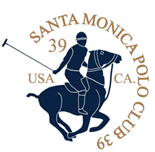

These were called the 39 sign and the shield sign. They were
dated April 2011 and Autumn/Winter 2014.
82.
The following signs also show single horses, but have more complicated
elements included as well. The one on the left (“the flag sign”) was expressly
pleaded. The one on the right (which I call the “roundel sign”) was not, although
it was said by the Defendants to be commercially important. The flag sign was
undated and the roundel sign actually dates back to 2008.
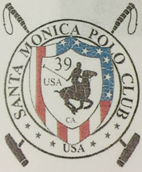

83.
Then there are the multi-horse versions. The two-horse version was
dated Spring/Summer 2012. I have shown the Defendants’ preferred version
thereof, as opposed to a similar black and gold version thereof which was expressly
pleaded by the Claimants. The three-horse version was expressly pleaded and,
as I have said, post-dated the start of these proceedings.
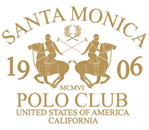

84.
I need to consider each of these signs individually, as well as the
other signs listed in Annex 1, but a lot of the reasoning will overlap. No
reason was given as to why I needed to distinguish between the UK and EU trade
marks here, so I will not do so.
Visual similarity
85.
It was not disputed that visual similarities were important in relation
to marks used on clothing. The relevant visual similarities between the
Claimants’ mark and each of the Defendants’ signs are easier to see than
describe. They include a polo player with a raised stick, riding a pony which
is shown side on and running. The words “polo club” are also common to all of the
signs, although the UK mark has the disclaimer I mentioned.
86.
The original sign, the 39 sign, and the shield sign all have some extra visual
elements which are not present in the Claimants’ mark (eg a scroll, the border,
etc), but I do not think anything turns on them. These elements are neither
dominant nor distinctive.
87.
The flag sign and roundel sign also have some visual elements which are
not present in the Claimants’ mark. These are more substantial in terms of
their visual impact (see eg the mallets, the flag, and the shield elements in
the flag sign; the split colour aspects of the roundel sign) but are still
neither dominant nor distinctive. The dominant part of both of these signs
remains the pony plus polo player, to which the user’s eye is drawn.
88.
The two horse logo (as the name suggests) has two ponies plus riders,
but these are mirror images of each other. The Santa Monica lettering follows a curve above the ponies (as
the Beverly Hills lettering does
above the Claimant’s single pony) and the words POLO CLUB appear in capitals
below the ponies (again, similar to the Claimants’ mark). It also has a number
of visual elements not present in the Claimants’ mark, such as the numbers,
laurel wreath, etc but these are neither dominant nor distinctive.
89.
The three-horse logo is visually quite different to the Claimants’ logo –
not only are there now three horses, but the horse and rider in the front is
visually distinct from the other pair as well as being more prominent than
either. The arrangement of the SANTA MONICA letters is also different to the
BEVERLY HILLS letters.
Aural similarity
90.
The only aural similarity is the words “polo club”. The Defendants’
goods are not sold into the polo market or for use in polo, and it was not
argued that these words were merely descriptive.
Conceptual similarity
91.
There was no specific evidence about what the average consumer would
make of “Beverly Hills” and/or “Santa Monica”, both sides relying simply on
submissions and leaving it for me to decide. Both are well known place names,
and in both cases it is implicitly assumed that the consumer would believe
these to be the sort of place that would have a polo club – ie glamorous and rich,
not a deprived industrial area. I accept the Claimants’ submission that the
average consumer would probably know them both to be places in the USA, but I
am not sure that the average consumer would know that they were both places in
California. They are in fact neighbouring districts of Los Angeles.
92.
I consider that there are clear conceptual similarities between all of
the marks in question. Some overlap with the visual similarities (eg the pony,
rider, words), some less so (eg the idea of a polo club, and the place
associated therewith). These similarities are common to all of the Defendants’
marks, which is not surprising since the Defendants intended them all to form
part of the same SMPC brand.
Identical/similar goods and
services
93.
The respective goods are identical insofar as the Defendants’ mark was
used on clothing, which seemed to be the majority – and perhaps the vast
majority - of such use. No specific arguments were advanced in relation to
footwear, but this is expressly covered by the EU mark, and I find that this is
similar to articles of clothing (for which the UK mark is registered).
Enhanced distinctive character of
the Claimant’s mark through use
94.
I will consider the reputation of the Claimants’ mark in more detail in the
next section. For present purposes I will simply observe that on the evidence
there was limited use up to 2008, but increasing amounts of use thereafter
(particularly in and after 2010). This applies both to the UK and the EU.
Actual confusion in the market
95.
The Defendants repeatedly stressed what they characterised as a lack of evidence
of confusion despite both sides’ products being available on the market.
However this lack of evidence does not take them very far, for the following
reasons.
96.
First, the only real life situation where customer confusion was likely
to occur was where the products were sold side by side. In other situations,
confusion was much less likely to happen.
97.
There was evidence that both brands had once exhibited at the same trade
show, in line of sight of each other. There was no evidence of confusion
arising at that particular show, but the Claimants pointed out that those
attending were traders (hence more knowledgeable than the notional average
consumer) and the traders would have been able to see there were 2 separate stands.
Both factors may have reduced any actual confusion.
98.
Secondly, although I was shown a schedule suggesting that there were 5
customers in common, the only one which was explored in any detail in the
evidence was TK Maxx. It was not clear how much side by side trading there actually
was at TK Maxx at any time, and there was none for the 7 months from July
2016. I heard little or nothing about the other common customers (Jacamo, T J
Hughes, Slaters Menswear, and a luggage retailer called Express Gifts).
99.
Thirdly, no particular reason was given as to why customer confusion
was likely to be reported or to come to either side’s attention. Consumers of
clothing have better things to do than complain about trade marks. So lack of
evidence of confusion is not to be equated to positive evidence that there was
no confusion.
100.
The only relevant evidence of confusion is that involving Mr Bakehouse.
I cannot and do not rely on it too heavily for a number of reasons. For
instance I do not know precisely why he was confused; he is only one person;
and the nature of his confusion was the opposite of that required in law.
However there was nothing artificial about this evidence; his confusion must
have been due to either the Claimants’ name or the logo, and that name is part
of the logo; he was familiar with the Defendant’s SMPC brand; he was a trader
himself, so if he was confused then consumers were more likely to be confused;
and I was given no logical reason as to why evidence of “wrong way round”
confusion could not be relied upon in support of an argument there would also
be “right way round” confusion.
Conclusion
101.
Having set out the relevant factors, it falls to me to make a global
appreciation of the likelihood of confusion from the perspective of the average
consumer.
The one-horse signs
102.
In my judgment, there is a likelihood of confusion in relation to all of
the single-horse marks considered above (ie the original sign, the 39 sign, the
shield sign, the flag sign, and the roundel sign). I take into account in
particular the visual, aural, and conceptual similarities; and the overall
impression conveyed thereby, including the possibility of imperfect
recollection; and the identity/close similarity of the respective goods. I
have also relied on the evidence about Mr Bakehouse in reaching my conclusion,
but only to a limited extent. This is because I regard the incident as merely
demonstrating something which seems to me to be inherently likely, given the
factors I have identified.
103.
In my judgment this conclusion follows whether or not the Claimants’
mark had acquired an enhanced distinctive character through use. Since this
seems to be the only thing which changed between one date and another, there is
no need to consider infringement as at different dates. If it had been necessary
to consider this, then it would reinforce the finding of infringement –
particularly for signs first used from 2010 onwards, but also for signs first
used from 2008 so far as the UK mark is concerned.
104.
The same conclusion follows in relation to all of the other one-horse
marks I was shown (ie the ones in the schedule which are not specifically
addressed above). Very little argument was addressed to any of them. In my
view, the addition of extra elements makes no difference. Indeed there is no
evidence that these additions were particularly intended to make any difference.
On the contrary, the Defendants themselves saw them as forming part of the same
overall brand identity.
The two-horse sign
105.
The two-horse sign is closer to the borderline. Obviously if one puts
this sign next to the Claimants’ mark then the visual differences are apparent,
but that comparison is unfair to the Claimants since it ignores the possibility
of imperfect recollection. Even so, the exercise is instructive:
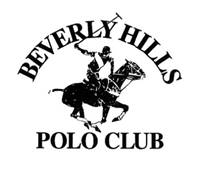
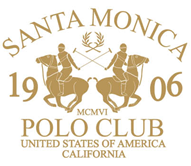
106.
In my judgment, there is still a likelihood of confusion here. I again
bear in mind the visual, aural, and conceptual similarities; and the overall
impression conveyed thereby, including the possibility of imperfect
recollection; and the identity/close similarity of the respective goods. There
are now two galloping ponies (plus riders with sticks raised) rather than one,
but the fact that the two are mirror images of each other goes some way to
neutralising the visual impact of that difference. In addition, the Claimants’
use of its mark had been substantial up to 2012, the date upon which
infringement of this sign is to be assessed.
107.
The other two-horse signs were not addressed in argument, but the same
conclusion would follow, for similar reasons to those set out in paragraphs [104]
and [106] above.
The three-horse sign
108.
In my view the overall impression created by this mark is now
different. The aural, and to a lesser extent conceptual, similarities still
apply, but the visual differences are to my eye quite striking.
109.
I need to bear in mind that infringement of this sign needs to be
considered as of 2016, and that the Claimants’ mark had acquired a very
substantial enhanced distinctive character through use by that date. Does that
make a difference? I find this a difficult question but in the end I do not think
it does. The three-horse sign does not infringe under these provisions.
Infringement of the EU and UK marks
pursuant to s 10(3) of the Act/Article 9(2)(c) of the Regulation
Legal context
110.
The Court of Appeal set out the relevant law, including the 9 requirements
which have to be satisfied, at Comic Enterprises v
Twentieth Century Fox Film Corp [2016] FSR 30 at
[107]-[123]. In this case the issues are whether the Claimants’ marks
each have a reputation in the territory; whether the Defendants’ use gives rise
to a link between its signs and the Claimants’ marks in the mind of the average
consumer; whether it gives rise to one of the three relevant types of injury;
and whether the Defendants’ use was without due cause. There were a number of
further additional submissions as follows.
Reputation
111.
The first concerns the extent of reputation that must be shown. For a
UK mark, the leading case at first instance in this jurisdiction remains Red
Bull v Sun Mark [2012] EWHC 1929 (Ch), which held that the requirement is not particularly onerous. This
was not considered in Comic (see [133]) and neither side was able to
show me any authority which took that point any further. Both sides, however agreed
that the mark need not be a “well-known mark” within the meaning of s 56 of the
UK Act. For an EU trade mark, the leading case is PAGO, Case C-301/07
[2010] ETMR 5 which held that in order to qualify, the Community trade mark must
be known by a significant part of the public concerned by the products or
services covered by that trade mark in a substantial part of the territory of
the European Community; and the territory of a single Member State might be
considered to be such.
112.
Both sides accepted that the extent of the reputation is more than
simply a mere threshold condition. On the contrary it is a vital element in
the assessment of whether there is a link, and the extent of any injury to the
mark. See Kitchin LJ in Maier v ASOS at [120]-[122].
113.
The Claimants also submitted that the reputation of the trade mark need
not be in relation to the goods or services for which the trade mark is
actually registered. I infer that it did so in order to rely on reputation
gained by reason of use in relation to luggage, which is not something for
which its marks are registered.
114.
I agree with the submission. There is nothing in the wording of either
s 10(3), as it now stands, or Article 9(2)(c) of the Regulation as it now
stands which requires this. Cases such as Davidoff & Cie SA v Gofkid
Ltd (C-292/00) [2003] ECR I-389; [2003] FSR 28 at [30], and Adidas-Salomon
AG v Fitnessworld Trading Ltd (C-408/01) [2003] ECR I-12537; [2004] FSR 21 at [18] to [22] make it clear that infringement
under this head is established whether the relevant goods or services are
identical, similar, or not similar to those for which the mark is registered;
all possible permutations, in other words. This is not quite the same point as
whether the reputation itself has to arise in relation to the goods or services
for which the mark has been registered, but given Davidoff and Adidas
I can see no logical reason as to why there should be any distinction; and no
such reason was given. Of course, the greater the distance between the goods
and services which actually generated the mark’s reputation, and the goods and
services in relation to which the infringer’s sign is being used, the less
likely it will be that the average consumer will form any link with the mark in
question and/or that there will be any damage to the mark: see Maier,
above.
115.
The Claimants also submitted that provided the mark has a reputation in
the territory, it did not matter whether this was achieved by reason for sales
in the territory or sales outside the territory (eg in the Middle East – hence
the evidence I mention above). I accept the Claimants’ submission, which I do
not think was actually disputed. In trade mark law, unlike passing off, only
reputation is required in the territory and not goodwill: cf Starbucks (HK)
v British Sky Broadcasting (No. 2) [2015] UKSC 31. However nothing appears
to turn on this, since the evidence did not go into much detail about the
extent of sales outside the EU.
Injury to the mark
116.
The Claimants submitted that in cases where the trade mark had a
reputation and the Defendant’s use gives rise to a link between its signs and
the Claimant’s marks in the mind of the average consumer, injury was almost
always likely to occur. I disagree.
117.
For instance where dilution (ie detriment to distinctive character) is
relied upon, the law requires evidence of a change in the economic behaviour of
the average consumer of the goods or services for which the earlier mark was
registered consequent on the use of the later mark, or a serious likelihood
that such a change will occur in the future. A serious risk of detriment can
be established by logical deductions, but any such deduction cannot be
supposition and must instead be founded properly on all the circumstances of
the case and the nature of the trade in issue. See Intel
Corp v CPM United Kingdom (C-252/07) [2008] ECR I-8823; [2009] RPC 15 and Environmental Manufacturing LLP v OHIM (C-383/12).
118.
Unfair advantage does not require proof of a subjective intention
by the Defendant to exploit the reputation in the Claimant’s mark: see Jack Wills v House of Fraser (Stores)
[2014] FSR at [75]-[80]. However it is not enough just to show an advantage:
there must be some added factor which makes it unfair. See Whirlpool Corp v
Kenwood Ltd [2009] EWCA Civ 753, [2010] RPC 2 at [136].
Due cause
119.
Both parties referred to the Leidseplein v Red Bull case, C-65/12,
[2014] ETMR 24, where the Defendant had used the sign Bulldog since 8 years before
Red Bull applied for its mark. The Court of Justice emphasised the need to
strike a balance between the proprietor’s rights in a mark with reputation and
the interests of other economic operators: see eg [41]-[46], [60].
120.
The Defendants submitted that there was no reason in principle why the
same approach should not be taken where a Defendant commenced its good faith
use after the date of the Claimant’s trade mark. The Defendants also
gave an example of how this might happen. It could be that the potential
infringer’s use started at a time when the proprietor’s mark was either unused
or only used at such a low level that it had insufficient reputation. Later,
the proprietor’s mark could grow to an extent that it did have sufficient reputation
and the requirements for infringement would otherwise be satisfied. I agree
with the principle, but whether it applies in any given case will depend on the
circumstances. For instance the Defendants’ argument implicitly assumes that
the potential infringer’s use was originally unobjectionable, and that the
nature of such use does not subsequently change in any material way.
121.
Both sides were agreed that in considering due cause, the Court should
take into account the factors relevant to the “honest practices in industrial
and commercial matters” defence: see Arnold J in London Taxi at [268],
[273]-[282].
Analysis
Reputation
122.
This is not a very precise exercise. One thing I will say is that it is
not particularly helpful to consider the absolute size of the market in this
context. The market in question is huge, but I have no doubt that a mark can
have a reputation in the clothing industry even if it only accounts for a small
fraction of that huge industry turnover. There are plenty of strong brands
having a reputation in this particular industry.
The UK
123.
I find that the Claimants’ mark had a reputation, albeit only a modest
one, in the UK by the first quarter of 2008. This is still my view even if it
were necessary (contrary to my view) to consider only goods for which the Claimants’
mark is registered. As I have said the Defendants accepted that there was
enough goodwill in the UK for a passing off action by the first quarter of 2008.
124.
I find that such UK reputation grew each year thereafter, and become
particularly substantial from 2010 onwards. Again, the Defendants accepted
this much.
The EU
125.
So far as the EU is concerned, I find that the Claimant’s mark was not
known to a significant part of the relevant public in a
substantial part of the territory of the European Union until 2010. The UK
sales alone only represent part of the EU, and I have already set out the
modest sales made in other EU member states in 2006-2008. Assuming Levi
Strauss applies to this type of infringement, which was not disputed, it
follows that there can be no infringement of the EU trade mark under this head by
the continued use in or after 2010 of signs first used prior to that date.
126.
However the Claimants’ mark did have the required
reputation in the EU from 2010 onwards, due mainly to the combination of UK and
Italian sales although there were sales in other EU member states as well. I
reach this conclusion whether or not I take into account non-clothing sales (particularly
since the Italian sales were mainly clothing in any event).
127.
Thereafter the reputation of the Claimants’ mark
continued to grow across Europe, even if there was (as I have said) some year
to year variation in terms of sales. By September 2016, the date when
the three-horse logo was launched, there is no doubt in my mind that the
Claimants’ mark had a very substantial reputation both in the UK and in Europe.
To use Mr Bakehouse’s description, it is and was quite a famous brand.
Link
128.
It is important to consider each of the Defendants’ signs individually
for purposes of link (and injury, and due cause for that matter). Having said
that, I have already held that most of the Defendants’ signs give rise to a
likelihood of confusion with the Claimants’ mark; and for similar reasons, I
consider that in all of these cases the Defendants’ use gives rise to a link
between its signs and the Claimant’s marks in the mind of the average
consumer.
129.
That leaves the three-horse sign. In my judgment, even though there is
no likelihood of confusion, the average consumer would still make such a link.
I reach this conclusion because of the extensive reputation which the
Claimants’ mark had in 2016; the nature of the Defendants’ use, ie on clothing;
and the visual, aural, and conceptual similarities identified above (which are
not enough to establish a likelihood of confusion, mainly because of the
reduced visual similarity, but which are still enough to call the Claimants’
mark to mind for the average consumer).
Injury to the mark
130.
The Claimants relied on all 3 types of injury identified by the Court of
Justice, ie each of (a) detriment to distinctive character of the mark, ie
dilution (b) detriment to the repute of the trade mark, ie tarnishing, and (c)
taking unfair advantage of the distinctive character or the repute of the mark.
I can immediately dismiss tarnishing since there is no evidence to support it.
Indeed the evidence was that the brands’ respective market positions overlapped
although their core customers did not. So far as dilution and unfair advantage
are concerned, I will again start with the three-horse sign.
Detriment to distinctive
character – three horse sign
131.
The main evidential point relied on was the 7 month gap in the
Claimants’ sales of branded BHPC products to TK Maxx. Although I have held
that this coincided with an increased level of sales by the Defendants of SMPC
branded product to TK Maxx, there is no evidence to explain why this actually
happened. In particular, no evidence to suggest that it had anything to do
with the Defendants’ signs. For all I know, TK Maxx simply wanted a change of
supplier.
132.
In addition, this particular gap started in July 2016, whereas the
three-horse sign was not used until September 2016. So the original decision
to move away from BHPC branded product cannot have been affected by the
three-horse sign.
133.
That is not the end of the matter. I have held that the Defendants’
previous signs gave rise to a likelihood of confusion. As such I have no
difficulty with the idea that the use of these previous signs led to dilution
of the distinctive character of the Claimants’ mark, in that they will have led
to dispersion of the identity and hold upon the public mind of the Claimants’
mark. The ability of the average consumer immediately to identify the
Claimants’ goods under the mark will have diminished. This will in turn have
changed the economic behaviour of the average consumer of the goods or services
for which the Claimants’ mark is registered, albeit that the change will be of
a gradual and insidious nature (as damage of this type almost always is).
134.
Furthermore I do not consider that this change in economic behaviour
will have come to an abrupt halt just because the Defendants changed from their
previous signs to the three-horse sign. On the contrary, the Defendants chose
the three-horse sign specifically in order to maintain continuity with their
previous signs. Part of that decision will have been a desire to achieve the
same economic effects of the previous signs, so far as possible. The fact that
there is no longer any likelihood of confusion does not mean that the dilution referred
to in paragraph [133] stopped happening; and in my judgment, it still does. In
order to avoid this result, the Defendants would have had to have made a much
clearer break with the infringing signs.
Unfair advantage –
three horse sign
135.
As noted above, it was not put to Mr Ahmed in cross examination, nor was
it submitted in closing, that the Defendants ever deliberately intended to take
advantage of the distinctive character or the repute of the Claimants’ mark.
Once again, that is not the end of the matter since I have to consider whether,
in objective terms, the Defendants’ three-horse sign takes such advantage.
136.
I have no doubt that the Defendants will gain an advantage from the
average consumer making a link between their sign and the Claimants’ mark. By
2016, the Claimants’ mark was very well known, particularly for clothing, and
it occupied a premium position in the market. Being linked with that mark
would be an advantage for any smaller clothing manufacturer.
137.
However merely gaining advantage, without more, is not necessarily
unfair. The added factor here which makes it unfair is that the Defendants
want to maintain continuity with their previous signs, which I have already
found to infringe the same mark of the Claimants. It does not matter whether
or not the Defendants knew or suspected that their previous signs infringed. Nor
does it matter that this is only an indirect connection to the Claimants’ mark:
in my judgment, even an indirect connection to the original mark can still
amount to taking an unfair advantage of the original mark. It would be different
if the Defendants’ previous signs had not infringed, and/or if the three-horse
sign had made a clean break with them.
138.
In any event I reach the same conclusion if I stand back and think about
the three-horse sign more broadly. Given the extensive reputation of the
Claimants’ mark by 2016, the similarities of the marks, and the identical
nature of the respective goods (which is an a fortiori factor), it seems
to me likely that the link to the Claimants’ mark in the mind of the average
consumer will create a subtle transfer of image of the Claimants’ mark, or of
the characteristics which it projects, to the goods sold under the three-horse
sign. That establishes infringement: see L’Oreal v Bellure [2009] ECR I-5185 at [41].
Due cause
139.
As suggested by the Defendants, without objection by the Claimants, I
will now consider the list of factors identified in London Taxi.
i)
Whether the defendant knew of the existence of the trade mark, and if
not whether it would have been reasonable to conduct a search.
140.
In this case, the Defendants’ trade mark agents did do a trade mark search
in 2006 but only on the words SANTA MONICA, and those searches did not reveal
the existence of the Claimants’ marks.
141.
It seems to me that whilst the search is an important factor, its
importance decreases over time. For instance it would still have been quite
recent in 2008 but on the evidence the commercial situation had changed
significantly by 2016.
ii) Whether the defendant used the sign
complained of in reliance on competent legal advice based on proper
instructions.
142.
There was no evidence about this.
iii) The nature of the use complained of, and in
particular the extent to which it is used as a trade mark for the defendant’s
goods or services.
143.
All the signs complained of are used as trade marks for the Defendants’
goods.
iv) Whether the defendant knew that the trade
mark owner objected to the use of the sign complained of, or at least should
have appreciated that there was a likelihood that the owner would object.
144.
The Defendants knew about the Claimants’ objection to their existing
brands from 2014.
v) Whether the defendant knew, or should have
appreciated, that there was a likelihood of confusion.
145.
The Defendants did not accept, and still do not accept, that there was a
likelihood of confusion although I have found that there was.
vi) Whether there has been actual confusion, and
if so whether the defendant knew this.
146.
I refer to my findings about Mr Bakehouse.
vii) Whether the trade mark has a reputation, and
if so whether the defendant knew this and whether the defendant knew, or at
least should have appreciated, that the reputation of the trade mark would be
adversely affected.
147.
The Defendants certainly knew about the reputation of the Claimant’s
mark by 2016, but they must have known about it from at least 2014 (the date of
the letter of complaint). They did not accept that this reputation would be
adversely affected.
viii) Whether the defendant’s use of the sign
complained of interferes with the owner’s ability to exploit the trade mark.
148.
It does, because of the dilution and unfair advantage I have mentioned.
ix) Whether the defendant has a sufficient
justification for using the sign complained of.
149.
This, to my mind, is a key factor. The Defendants want to maintain
continuity with signs which I have found to infringe. This cannot be a
sufficient justification.
x) The timing of the complaint from the trade
mark owner.
150.
The complaint about the three-horse version was brought promptly. The
complaint about the other logos could have been brought earlier. However, the
Defendants did not stop their activities when the complaint was brought. I
consider that it was always going to require litigation in order to resolve the
dispute; and litigation is both time consuming and expensive.
Injury/due cause – other signs
151.
For the Defendants’ other signs, I will be brief. I have already
concluded there is a likelihood of confusion in relation to each of them, and
for these reasons the use thereof also injures the Claimants’ mark. Such use
is again without due cause: there is no reason why the Claimants should be
required to tolerate injury to their mark arising from a likelihood of
confusion.
Conclusion
152.
The Defendants have not established due cause for using the three-horse
sign. It is not as if this is something they have used continuously since
before the Claimants’ mark was registered, or from before the Claimants’ mark
acquired a reputation. It is something which was devised after complaint had
been made, in order to preserve as much as possible of the market position
which had been generated using the infringing signs.
153.
Similarly the Defendants have not established due cause for using any of
the other signs either, to the extent that infringement is otherwise
established. I have already explained that there can be no
infringement of the EU trade mark under this head by the continued use in or
after 2010 of signs first used prior to that date, so it is not necessary to
consider due cause in that context.
Passing off
Legal context
154.
It was not disputed that for this purpose only goodwill in the UK needed
to be considered; that the Claimants could rely on goodwill acquired in
relation to any goods; and that the relevant legal test was different (see Interflora
v Marks & Spencer [2012] EWCA Civ 1501, [2013] FSR 21 at [33]-[34].
155.
Both sides addressed very little of their written and oral argument to
passing off. There was no formal concession that it stood or fell with s 10(2)
of the Act, but both sides relied on the same arguments as those advanced in
relation thereto.
Analysis
156.
I will be as brief as the parties were. In my judgment, the claim for
passing off succeeds to the same extent as the case on s 10(2): ie, not for the
three-horse sign, but it does for the other signs.
Breach of contract by D3 or D11.
Legal context
157.
The Defendants referred me to a series of extracts from Chitty on Contracts,
32nd edition, dealing with elementary principles of offer and
acceptance. Neither party made any submissions about acceptance of an offer by
conduct.
158.
It is well established that conduct can amount to acceptance: see Brogden
v Metropolitan Railway (1877) 2 App Cas 666. However the party alleging
the same has to show that the conduct, as a matter of objective analysis, is
intended to constitute acceptance: see the Court of Appeal’s explanation of Brogden
in Reveille Independent v Anotech International (UK) [2016] EWCA Civ 44
at [40], [55]-[56]. Moreover it is in my view important to distinguish between
cases where the conduct is some form of positive action which is actually
undertaken (see Reveille at [42]) and cases where the conduct consists
of a failure to do something which may never have been done in any event.
Analysis
159.
I refer to the facts relating to the contract as I have found them: see above.
In my judgment the occurrence of these two non-events does not constitute
acceptance by the Claimants of the Defendants’ counter-offer by conduct. There
is nothing about either which shows, as a matter of objective analysis, that
they were intended to constitute acceptance. Nor was the alleged significance
of these non-events ever communicated to the Defendants either. For all the
Defendants knew, the Claimants simply lost interest in suing and/or appealing,
which is why the correspondence peters out. Indeed this appears to be the
reality.
160.
It also seems to me that even if there had been a contract, it would only
relate to the version of the logo as used on the socks, since this is “the
logo to which your client has raised objection”. It would not extend to
other logos. This is the sort of detail which an actual contract would no
doubt have explored, if there had been one.
161.
In case I am wrong, I will consider the next issue in any event.
Procuring of breach of contract
by D5.
Legal context
162.
Here there was an issue of law. The Defendants argued that even if
there was a contract between either of the Claimants and D3 or D11, and even if
there had been some breach thereof, then Mr Ahmed could not be liable for
procuring such breach because he was a director of D3 and/or D11 at the
relevant time. I put it that way because the Defendants did not dispute the
proposition that if there had been any breach, Mr Ahmed had procured it.
163.
This issue of law was considered by Gloster J (as she then was) in Crystalens
v White, unreported save on Bailii, 7th July 2006 at [10]-[15].
The Judge considered a range of domestic and foreign authority starting from Said
v Butt [1920] 3 KB 497 and including 2 Court of Appeal cases (DC Thomson
v Deakins [1952] 1 Ch 646, Welsh Development Agency v Export Finance Co
[1992] BCLC 148). The Judge concluded that:
“In my judgment, it would
be contrary to the principle of limited liability if, in the circumstances
postulated in Said v Butt, namely that an employee director is acting within
his authority and bona fide in the interests of his company, could be liable in
such circumstances for inducing a breach of contract on the part of the company
in circumstances absent, additional features, such as conspiracy or dishonesty.”
164.
The Claimants pointed out that it seemed difficult to reconcile the
logic of this approach with that adopted in tort cases, starting with Evans
v Spritebrand [1985] 1 WLR 317 and more recently in eg MCA v Charly [2001] EWCA Civ 1441. It seems to me that there may be something in this, although
copyright itself may be an exception given the wording of the relevant statute.
However I regard that as a matter for the Court of Appeal, and not for a first
instance Judge. I shall follow Crystalens.
Analysis
165.
This is short and simple. Crystalens requires additional
features such as conspiracy or dishonesty; and none were pleaded, let alone
proved. Hence the point fails.
The Defendants’ counterclaim for
unjustified threats of trade mark infringement.
Legal context
166.
The legal issue here was whether s 21 of the 1994 Act is engaged where a
party merely threatens to join parties to litigation in which the primary
infringer (eg the maker or importer) of the accused goods was already a
Defendant. This was considered by Arnold J in Samuel Smith Old Brewery
(Tadcaster) v Lee (t/a Cropton Brewery) [2012] FSR 7 at 160. In that case
Arnold J appears to have concluded that such threats are actionable in principle,
but the letter in question in that case was not such a threat.
167.
I agree that a threat to join someone into existing proceedings is just
as actionable as a threat to issue proceedings against that person. There is
nothing in the wording of s 21 which suggests otherwise. Furthermore the
policy of the threats provisions is to stop proprietors who are willing to
wound, but not to strike. That policy is still engaged in such circumstances.
Analysis
168.
I have no doubt that the email sent to TK Maxx was an actionable threat
within the meaning of s 21: see my findings above. Nor is there any doubt that
D11 was a person aggrieved thereby since the threat concerned the goods it had
sold to TK Maxx.
169.
It is not entirely clear which particular version of the SMPC logo
appeared on the goods which TK Maxx sold, but I have found that all versions
thereof did infringe. It follows that there is a defence of justification
under s 21(2) of the Act and the threats counterclaim fails.
Conclusion
170.
In short:
i)
The Defendants’ signs, save the three-horse sign, infringe both of the
EU and UK marks pursuant to s 10(2)/Art 5(1)(b) TMD/Article 9(2)(b) EUTMR.
ii)
All of the Defendants’ signs infringe the UK mark pursuant to s
10(3)/Art 5(2) TMD; and all signs first used in 2010 or later also infringe the
EU mark pursuant to Art 9(2)(c) EUTMR.
iii)
The action for passing off succeeds, save in relation to the three-horse
sign.
iv)
The action for breach of contract by D3 or D11 fails.
v)
The action against D5 for procuring such breach of contract also fails.
vi)
D11’s counterclaim for unjustified threats of trade mark infringement is
dismissed.
Annex
1: Schedule 1 to the Defendants’ Opening Skeleton
Signs used by the
defendants classified according to the categories listed in the Defendants’
Skeleton.
|
|
Method of classification
|
Example signs
|
|
1
|
Number of ponies
|
|
|
  
Pic
87 Pic 71 Para 81
|
|
January 2008 -
LT para 22 to 28
2008 CAD book.
CAD dated 2 May 2008 [A8/2473]
|
Spring Summer 2012 CAD book [A8/2554]
|
September 2016
LT para 39
|
|
2
|
Signs consisting of only (a) a single
pony and (b) the words Santa Monica Polo Club
|
|
|

Pic 23

Pic 103
|
2008 CAD book. CAD dated 2 May 2008
[A8/2473]
|
|
Autumn/winter 2014 [A9/2764]
|
|
3
|
Signs consisting of only (a) single
pony, (b) the words Santa Monica Polo club and (c) additional verbal
elements
|
|
|
 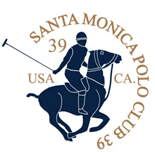
Pic
79 Pic 51
|
|
Autumn/winter
2014 CAD book [A9/2768]
|
LT- para 36 says CAD drawing dated 16
May 2012 evidence of the first use on a polo shirt of the 39 Sign.
2011 CAD
book. CAD dated 14 April 2011 [A8/2562]- on shorts
|
|
4
|
Signs consisting of only (a) single
pony, (b) the words Santa Monica Polo club and (c) additional graphical
elements
|
|
|
  
Pic
27 Pic 87 Pic 76
|
|
Cannot
locate badge in CADS
|
January 2008 –
LT para 22 to 28
2008 CAD book. CAD dated 2 May 2008
[A8/2473]
|
Cannot locate badge in CADs
|
|
5
|
More complex Signs which include both
additional graphical and verbal elements as well as the pony and the name
|
|
|
  
Para
81 Pic 44 Pic
25
See above
Cannot locate A/W CAD book 2013
[A8/2608]
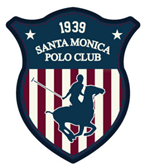 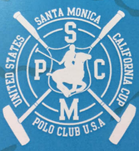 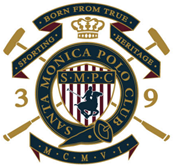
Pic
36 Pic 20 Pic 42
A/W CAD book 2012 A/W CAD book
2012 A/W CAD book 2015
[A8/2565]
[A8/2572] [A9/2901]
Clearer version Clearer version
[A8/2595] [A9/2964]
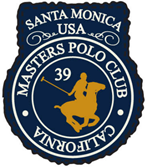 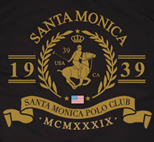 
Pic
8 Pic 46 Pic
47
Potentially CAD book 2011 Cannot
locate Potentially A/W Cad book 2013 CAD dated 2 Feb
2011 [A8/2608]
[A8/2527]
Or
Or
[A8/2573] A/W
2012 [A9/2968] A/W 2015
 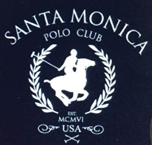 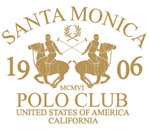
Pic
6 Pic 66 Pic 71
Cad book 2008 A/W Cad
book 2014 See above
CAD dated 7 Jan 2008 [A9/2732]
[A8/2477]
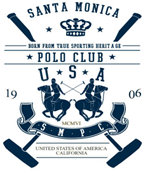  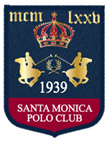
Pic 102 Pic
60 Pic 29
S/S Cad book 2016 S/S Cad
book 2014 S/S Cad book 2013
[A9/2954]
[A8/2648] [A8/2586]
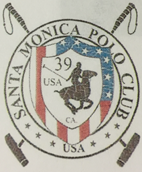
A2/36/527
|
|
|
|
|
|
|
|
|
|




































